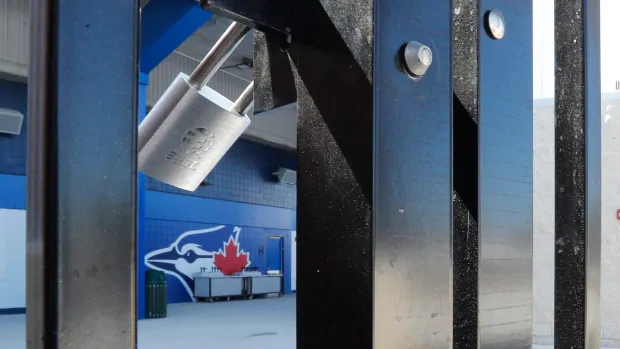
As sport leagues inch closer to a pandemic comeback, many athletes are making headlines for testing positive for COVID-19.
Four tennis players tested positive at a tournament hosted by Novak Djokovic, leading them to cancel an event final. MLB teams have closed training facilities after multiple teams reported cases. A handful of NFL franchises have been struck as well.
But there’s nothing to be worried about. At least, not yet.
In fact, expect to see more positive cases. With athletes heading back to competition and training camps after living by their own rules — some in more high-risk areas than others — it’s unrealistic to expect suggested self-isolation protocols will be universally followed.
That’s why many leagues and tournament outlines are designed around tracing the positive cases to keep them from spreading.
WATCH | Pro leagues plan return despite growing COVID-19 rates:
On the other hand, Dr. Bogoch is keeping an eye on what happens once athletes are back to their routines.
“What would be unnerving would be to see if there’s sustained transmission within a bubble despite all these measures taken to prevent that,” he said. “That would be concerning.”
No perfect plans
Dr. Bogoch is impressed by the plans he’s seen from leagues like the NBA and NHL, which put together hundred-page proposals to form bubbles in order to keep athletes and staff safe while re-opening.
But in situations like these, there’s no such thing as a completely sealed bubble.
So the key is to watch how fast each league and tournament is able to shut down the cases that do occur.
“If does get in, it can’t get very far because there’s diagnostic testing, physical distancing, hand sanitation,” he said. “We get there’s athletes that are going to be close to each other, but hopefully with the surveillance systems in place and the testing people will get identified really quickly and not contribute to transmission in the bubble.
“If there are these stringent measures and these bubbles are in place and people are getting infected in spite of all these protective layers, then yeah, we got a problem.”
WATCH | Federal government approves NHL resumption plan:
That being said, in Bogoch’s opinion, it won’t be as simple as a high number of cases that determines whether a league’s plan is working or whether it should admit defeat against the virus.
“It’s not going to be a hard number you’re going to set and go ‘Ok, after we have a blank number of cases we’ve got to shut it down.'” he said. “It’s going to be a value judgment and basically look at the number of people involved and the extent to which there’s involvement. Like, ‘is it just one team or is it multiple teams or multiple people that are separated by time and space but still in the bubble?’
“These are things that will be taken into consideration I think.”
Florida the test vehicle
And some leagues have proven in the right environment — with the right plan — sport can safely happen during the pandemic. The Korean Baseball Organization has successfully run its season since early May without any major roadblocks. The Premier League and Bundesliga have kept their seasons going despite some positive cases. And Spain’s national basketball league is in the middle of a successful centralized, condensed tournament to crown a champion.
But leagues like the NBA, WNBA and MLS which plan to start their seasons next month in Florida will be putting their plans to the ultimate test. The state set a single-day record last week with just over 4,000 new cases, making the state the new hot spot in the U.S.
“Despite the best laid plans, if you’re going to be putting players in a bubble in an area where there’s a significant amount of disease transmission, you still may introduce the disease into the bubble,” Dr. Bogoch said. “And you have to be very careful to adhere to the measures in place to make sure there’s no further transmissions.”